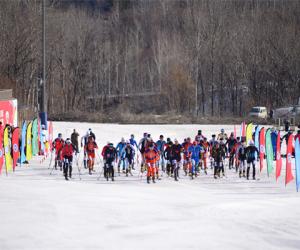Following the economic reforms introduced by Deng Xiaoping in the 1980s and the gradual abandonment of a socialist command economy in favour of a de facto free market, China has become increasingly rich and its people – within the constraints of continuing Communist Party political control – increasingly free. One interesting consequence of this transformation has been the rebirth of the ancient Tea-Horse Road, albeit in a new guise.
To be sure, the people of Tibet still drink a great deal of butter tea, and the tea plantations of Yunnan and Sichuan now produce more and better quality tea than at any time in their history. But this produce now travels overland to Lhasa and beyond by truck, along paved roads. Except in the most remote of rural areas, the mule caravan has had its day.
And yet, unexpectedly, the fame of the ancient Tea-Horse Road is currently experiencing a revival that shows no sign of diminishing. In the increasingly rich and sophisticated cafes and teashops of Shanghai and Beijing, as well as a world away in cities like New York and San Francisco, London, Paris and Melbourne, Pu’er tea is enjoying an explosion of popularity, both for its taste and for its much-vaunted health-enhancing qualities – as an aid in digestion, in reducing blood pressure, cholesterol and lipid levels, in slimming and as an anti-carcinogenic, not to mention as a cure for hangovers.
Of course, there’s no need to go to San Francisco or Shanghai to experience the Pu’er tea phenomenon. In Yunnan, Sichuan and Tibet the history, taste and health-promoting qualities of Pu’er are increasingly celebrated, with a plethora of tea shops and restaurants aimed primarily at Chinese tourists and customers, but also at overseas visitors. In the Yunnanese capital of Kunming, for example, two of the most popular hotels for visitors are called ‘The Hump’, and ‘The Camellia’, and the latter – which is rendered Cha Hua or ‘Tea Flower’ in Chinese – boasts a Cha Ma ‘Tea Horse’ Restaurant and Bar.
The former Tea-Horse Road itself, too, is increasingly being promoted as a cultural phenomenon and tourist attraction, aimed chiefly, but not exclusively, at the rapidly-expanding Chinese tourist market. ‘Tea-Horse tours’ are offered by travel companies operating from Kunming and Lijiang, Chengdu and Ya’an, among other cities. Sections of narrow, paved Tea-Horse Road, long since abandoned, are being restored and signposted for trekking, and old bazaars that once served the Tea-Horse trade are being rebuilt and promoted as tourist attractions.
Perhaps the best example of this is Shaxi Town in Yunnan’s Jianchuan County, not far from Lijiang. In 2001 Shaxi’s Sideng Jie Bazaar was listed by the World Monuments Fund (WMF) as an endangered site (together with, for example, Phnom Bakheng Temple at Angkor in Cambodia, Jaisalmer Fort in India, and the Tomb of Emperor Minh Mang at Hue in Vietnam). Today the Sideng Street Bazaar has been fully restored (in fact, largely reconstructed) and is being vigorously promoted by the Yunnan authorities as ‘the best-preserved bazaar on the Ancient Tea-Horse Road’ in all China.






